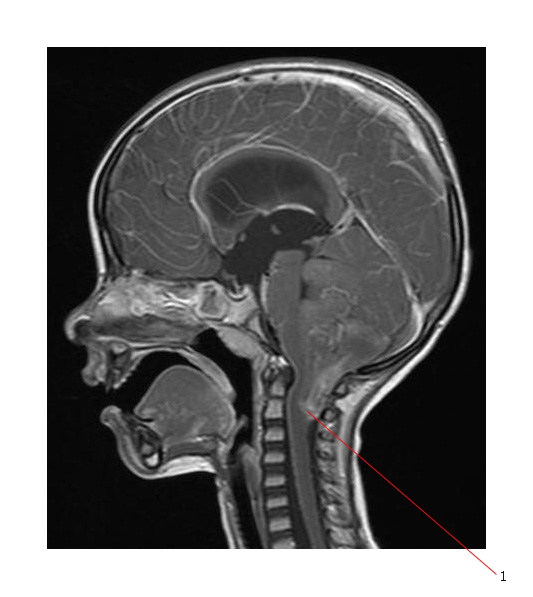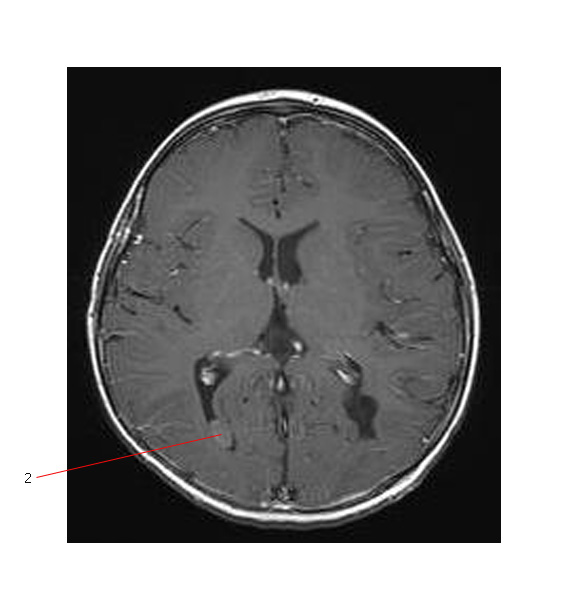Ependymoma
Staging
Local Spread:
- Posterior fossa tumors tend to grow to fill the fourth ventricle and invade the floor of the fourth ventricle down into the brain stem.
- 30-50% of primary tumors extend into the cervical spinal canal. There is downward extension through the cisterna magna and the cervical spinal canal. Tumor growth frequently extends to the C2 level, but has been documented to extend down to C5.
Below is a MR (post gadolinium, T1 sagittal section) showing an ependymoma extending down through the foramen magnum to C2. #1 points to this area.

Distant Spread:
- The risk of spinal cord seeding from a posterior fossa ependymoma is about 10% or so.
- Spread can occur throughout the cerebrospinal pathways.
- Infratentorial tumors have a higher chance of seeding than supratentorial tumors.
- The incidence of subarachnoid seeding has been found to vary with both tumor grade and tumor location:
Risk of tumor seeding:
| Tumor Properties | % of Tumors with Seeding | |
| Location | Supratentorial | 5% |
| Posterior Fossa | 10 - 15% | |
| Grade | High Grade | 10 - 15% |
| Low Grade | 5% |
MR scanning of the spinal cord and brain is the best investigation to detect craniospinal metastases.
The MR below (post gadolinium axial T1) shows a metastatic deposit (#2) from ependymoma in the right occipital horn.


